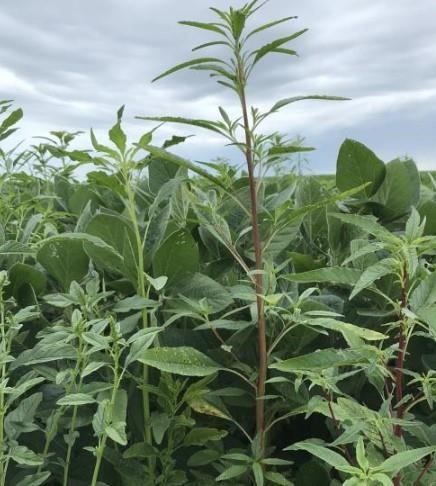By Prashant Jha
This is the time of the year when late-season pigweeds (waterhemp and Palmer amaranth) poke through the soybean canopy and produce seeds. These late-season pigweeds either emerged after herbicide applications, or survived inappropriately timed or less-than-effective postemergence herbicides. Given waterhemp and Palmer amaranth’s propensity to evolve resistance to herbicides, it is also possible that the survivors are resistant to the postemergence herbicide that was used. Based on our recent statewide survey conducted in 2019-2020, waterhemp populations with multiple resistance to five different herbicide groups (HGs 2, 5, 9, 14, and 27) are evident in Iowa production fields and cases of resistance continue to escalate in the state. The development of resistance to dicamba, 2,4-D, or glufosinate may occur in the near future given their intensity of use in corn and soybean fields.
Effective management of waterhemp and Palmer amaranth has been one of the primary goals of our weed educational programs. For Palmer amaranth specifically, a focus on preventing spread and eliminating populations is key. There is information on late-season identification of Palmer amaranth vs. waterhemp. One of the most important points about these two pigweeds is their ability to produce more than 500,000 seeds/plant. Furthermore, those seeds can remain viable in the soil for 4-5 years.
